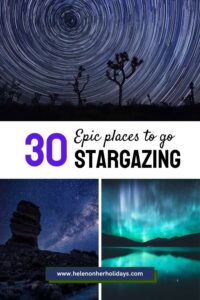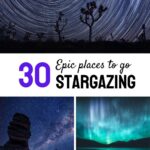Gazing up into a starry sky is one of the most amazing experiences you can have on earth, and there are wonderful places to go stargazing all over the world. In this post, I’ve put together some of my favourite stargazing spots, along with recommendations from other travel bloggers.
From deserts to mountain tops and state of the art observatories to UNESCO World Heritage Sites, get ready to explore the beauty of the skies from the Earth’s most stunning viewpoints.
Contents
Places to go stargazing in the UK
Northumberland, England
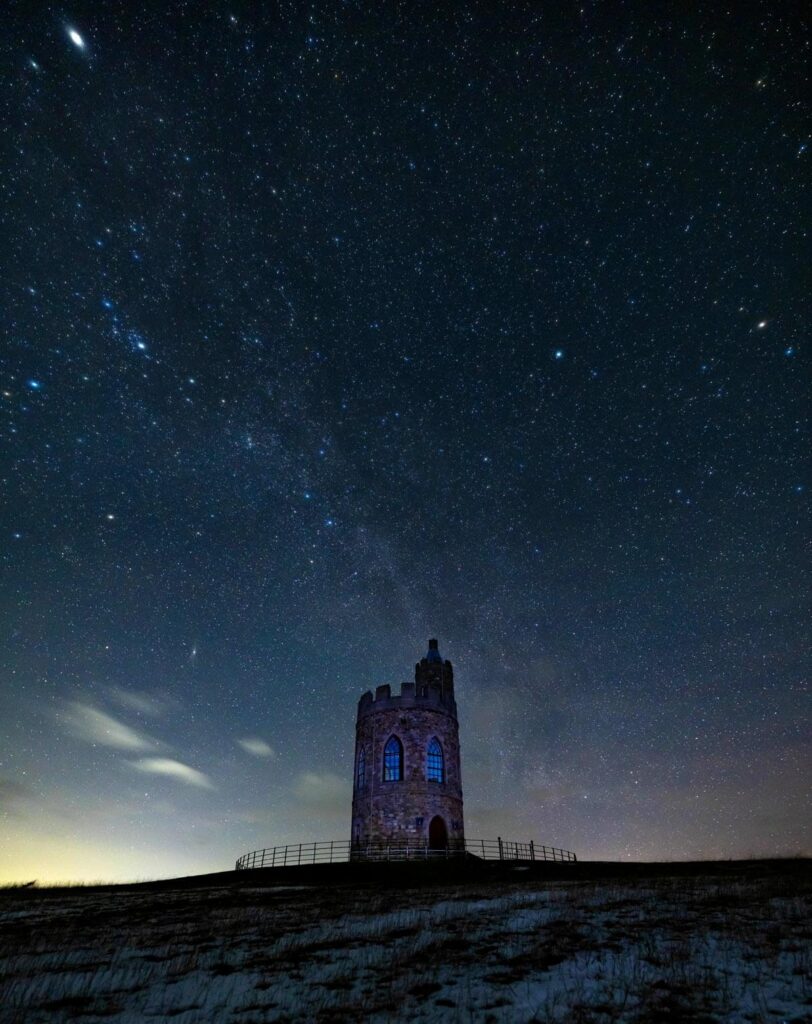
Northumberland, England’s most northerly county, offers some of the best stargazing experiences in the UK. The Northumberland International Dark Sky Park, Europe’s largest area of protected night sky, is a must-visit, with some of the darkest skies in Britain providing crystal clear views of the Milky Way, distant galaxies, and shooting stars.
There are observatories and stargazing spots all over the county, among Northumberland’s coastal castles, wild uplands and lakes. Two of the best are Battlesteads Observatory near Hadrian’s Wall and Kielder Observatory, which is nestled in the heart of Kielder Forest.
Brecon Beacons (Bannau Brycheiniog), Wales
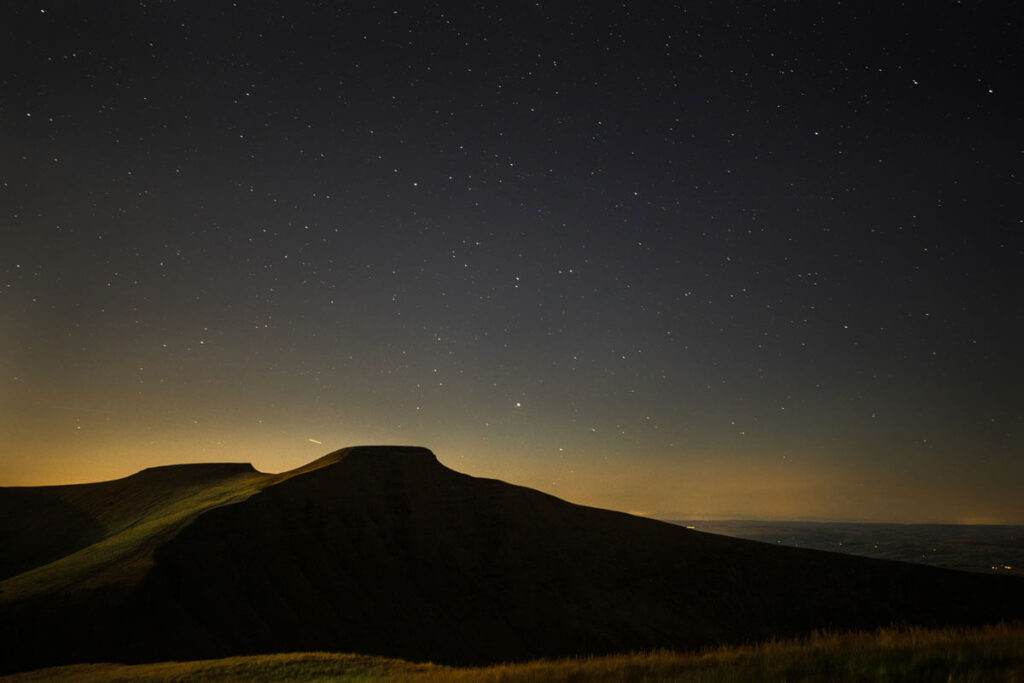
Contributed by Lowri from Many Other Roads
The Brecon Beacons National Park in Wales, even though not known by many, is the ultimate place for star gazing for anyone visiting Wales. This stunning part of the world has clear skies, no light pollution and undisturbed views.
It’s such a great place for stargazing that in 2012 the entire Brecon Beacons National Park was declared an International Dark Sky Reserve. On a clear night, you can see the Milky Way, constellations and even meteor showers.
Many locals do not book a tour to experience the night skies and just drive until they find a good spot to pull over. However, if driving isn’t for you, you can get the same views if you book an amazing cabin with a hot tub.
Dumfries and Galloway, Scotland
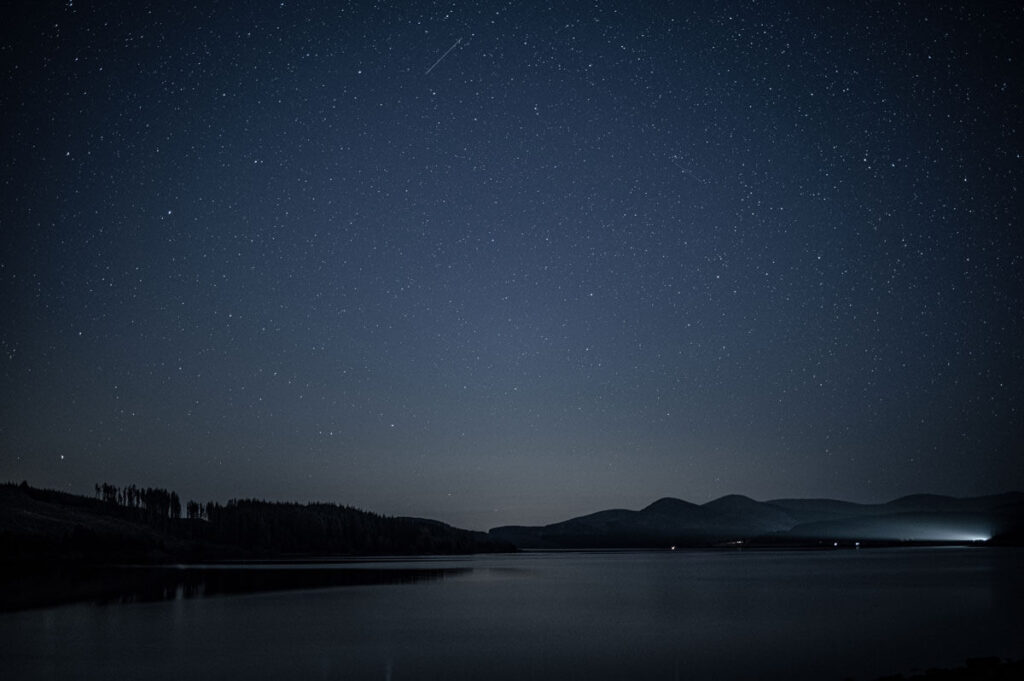
Dumfries and Galloway in southern Scotland is home to the Galloway Forest Park, the UK’s first Dark Sky Park. These are some of the darkest skies in Europe, giving stunning views of the night sky; on a clear night you can see over 7000 stars with the naked eye.
Clatteringshaws Loch is a wonderful place for stargazing in Galloway Forest Park. The loch provides a serene, reflective backdrop while the remote location, far from light pollution means the skies here are jaw-droppingly beautiful.
If you’re looking for a guided introduction to astronomy or astrophotography, you can visit the Galloway Astronomy Centre, which is located just south of the Galloway Forest Park in Kirkcudbright. Kirkcudbright is also home to the Dark Space Planetarium.
Isle of Lewis, Scotland
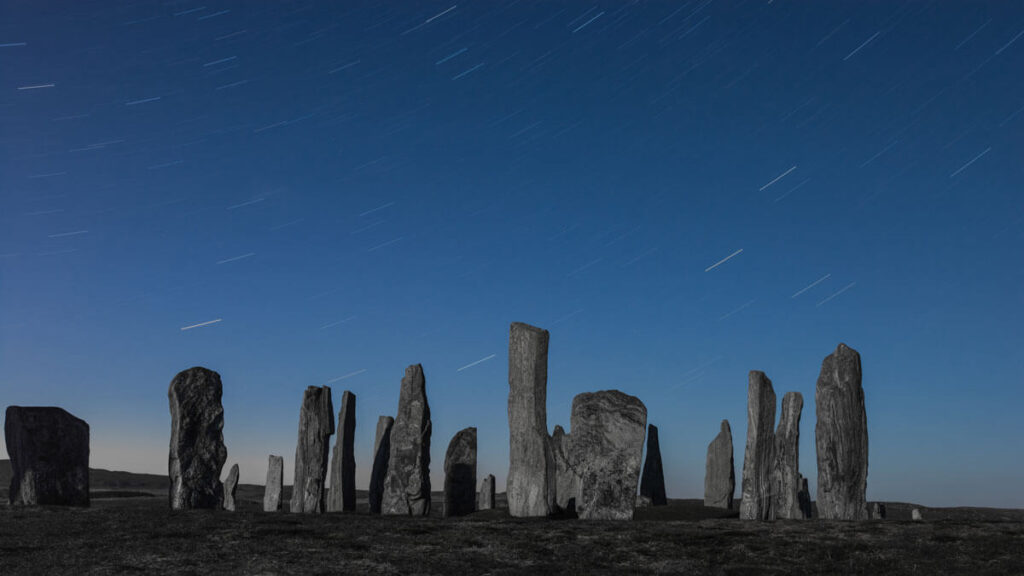
Contributed by Kristin from Scotland Less Explored
The Isle of Lewis is an island northwest of Scotland in the Hebrides, and it is perfect for stargazing since there is so little light pollution. If you are lucky you can even see the northern lights during the winter months.
You will have to bring your own equipment and unfortunately there are no organised stargazing tours. One of the most popular spots for stargazing is beautiful Tolsta Beach.
To get to Lewis you can either take a flight or ferry to Stornoway. There are several hotels in Stornoway town centre, the best being Lews Castle.
Top stargazing places in Europe
The Alps, Switzerland
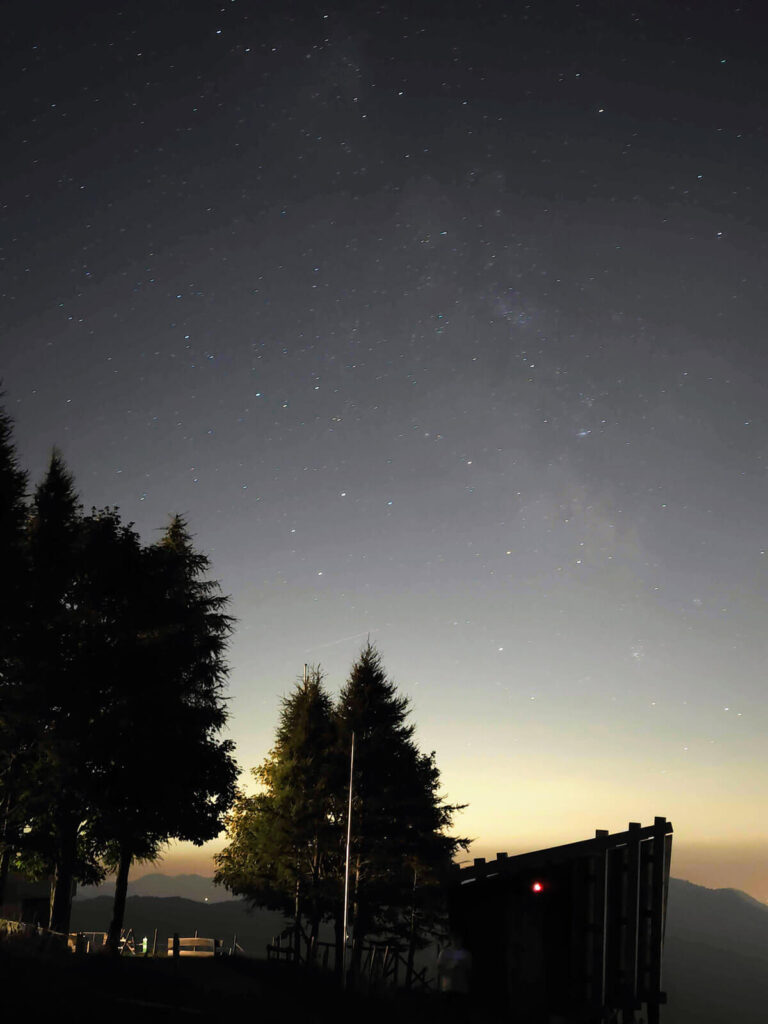
Contributed by Zoe from Together In Switzerland
For one of the best places to see the stars and go stargazing, consider looking up to the night sky in Switzerland.
The Swiss Alps and mild climate together make ideal conditions to see the night sky and stars. Artificial light is also kept to the minimum in many Swiss locations. Some cities even turn off their main lights when there is a special stargazing night expected!
To stargaze in Switzerland, head above 900 metre elevation. It is best to stargaze with a clear night sky, usually in Winter when it gets the darkest between 8pm and 4am.
You can of course stargaze simply to enjoy, but with such low light pollution, you can capture the stars these days also with a decent phone as long as you have a tripod.
Rhodes, Greece
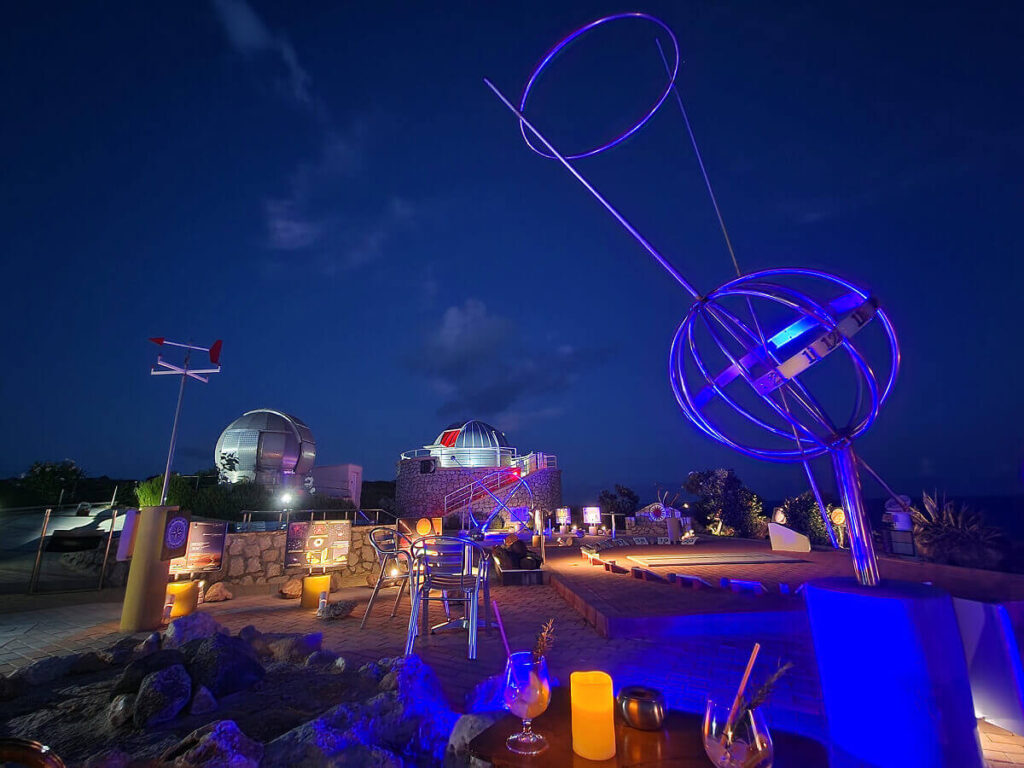
Contributed by Paulina from the UK Every Day
If you’re looking for one of the best things to do in Rhodes, make sure to include a visit to the Astronomy Cafe on your itinerary.
What sets this cafe apart is its elevated location, which offers a unique outdoor museum experience that was crafted with lot of passion.
With the observatory’s powerful telescopes, you can gaze at celestial bodies like the sun, moon, planets, and even distant galaxies then enjoy delicious astro-themed cocktails.
El Torcal de Antequera, Spain
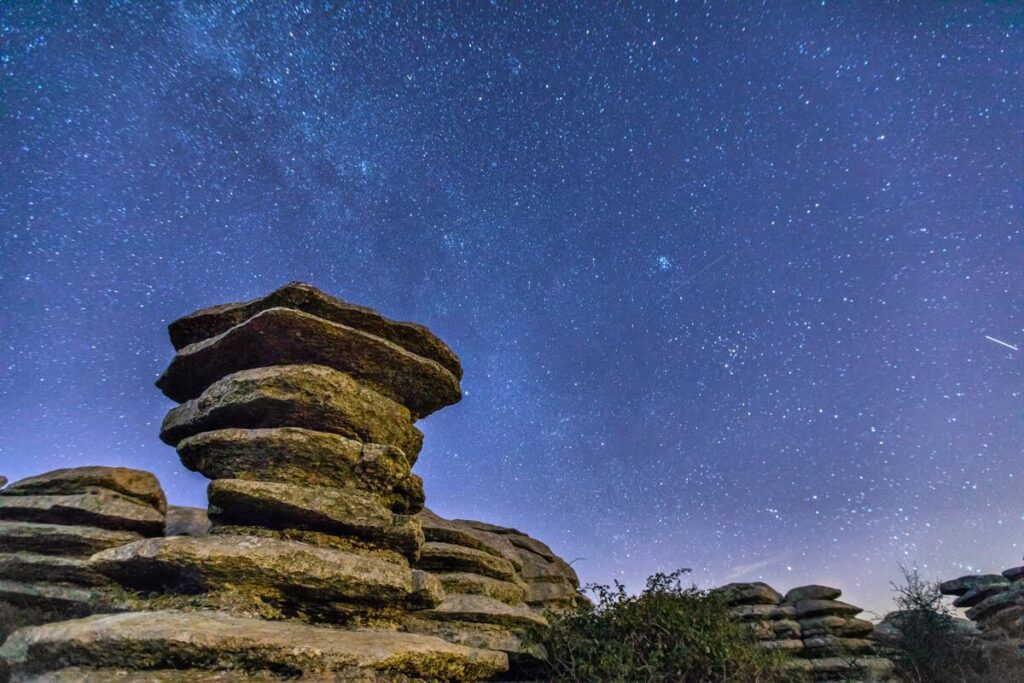
Contributed by Linn Haglund from Andalucia Hiking
El Torcal de Antequera in southern Spain is a fabulous place for stargazing. The area is famous for its unique karst formations and a popular tourist destination, but the remote location makes it a fabulous place to see the night sky.
During the summer months, there are guided experiences with telescopes available at the observatory that must be booked in advance.
Due to being quite remote, you need a car to get there, but it is only a 45-minute drive from Malaga. It gets quite cold at night even in summer, so don’t get lured by hot summer nights in Malaga and dress well and bring a warm jacket.
Tenerife, Canary Islands, Spain
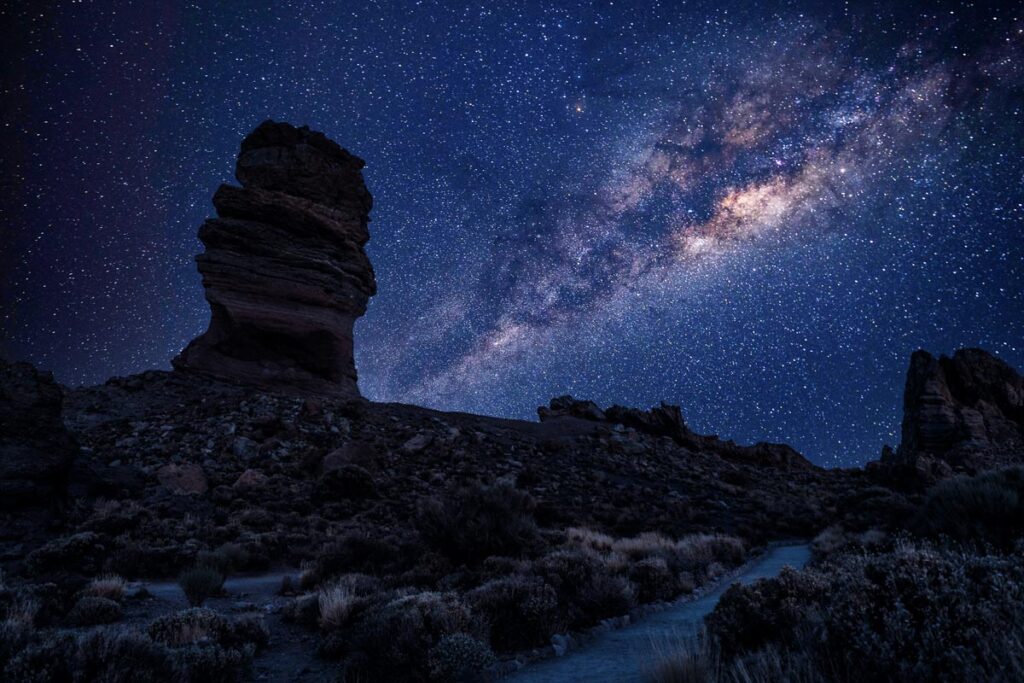
Stargazing on Mount Teide is one of the best things to do in Tenerife. Mount Teide is Spain’s highest mountain at 3,718 metres above sea level. Teide’s height, combined with Tenerife’s latitude means that you can see 83 of the 88 recognised constellations.
While the Teide Observatory concentrates on solar observations, the surrounding areas of the Teide National Park are perfect for stargazing. Many local tour operators offer night-time excursions where the majesty of the Milky Way and other celestial wonders can be observed.
These guided tours often include transport to ideal viewing spots within the park, where professional guides set up telescopes and share insights about the night sky. The contrast between the volcanic landscape and the star-filled sky creates a surreal and unforgettable experience. It’s essential to wrap up warmly, as temperatures drop significantly at night compared to the warm resorts on Tenerife’s south coast!
La Palma, Canary Islands, Spain
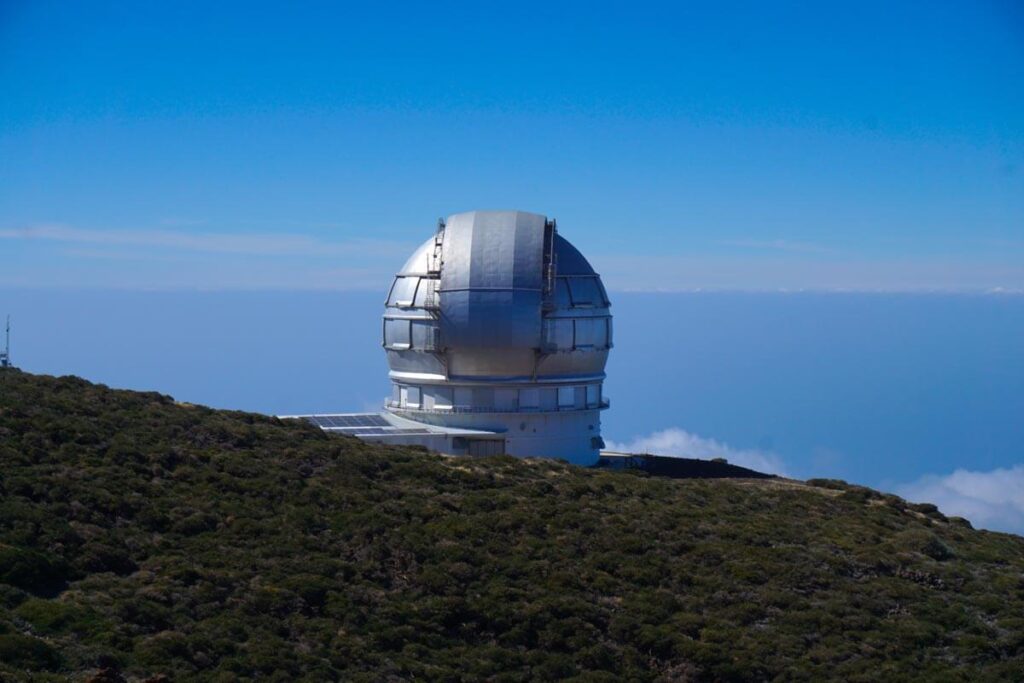
Contributed by Inês from Randomtrip.net
La Palma, another Canary Island, was the first Starlight Reserve in the world and is a wonderful place to go stargazing. The island is protected by law to avoid excess light pollution, and it’s home to the Roque de los Muchachos Observatory at the island’s highest point, where several big telescopes are installed and used for astronomical research.
You can do a stargazing tour at Roque de los Muchachos or on your own if you have your own equipment. Most shared tours include several telescopes and a guide that will help you learn how to observe the sky at night. It is also possible to do a daytime guided tour at the Observatory.
Places to see the stars in North America
Jasper National Park, Alberta, Canada
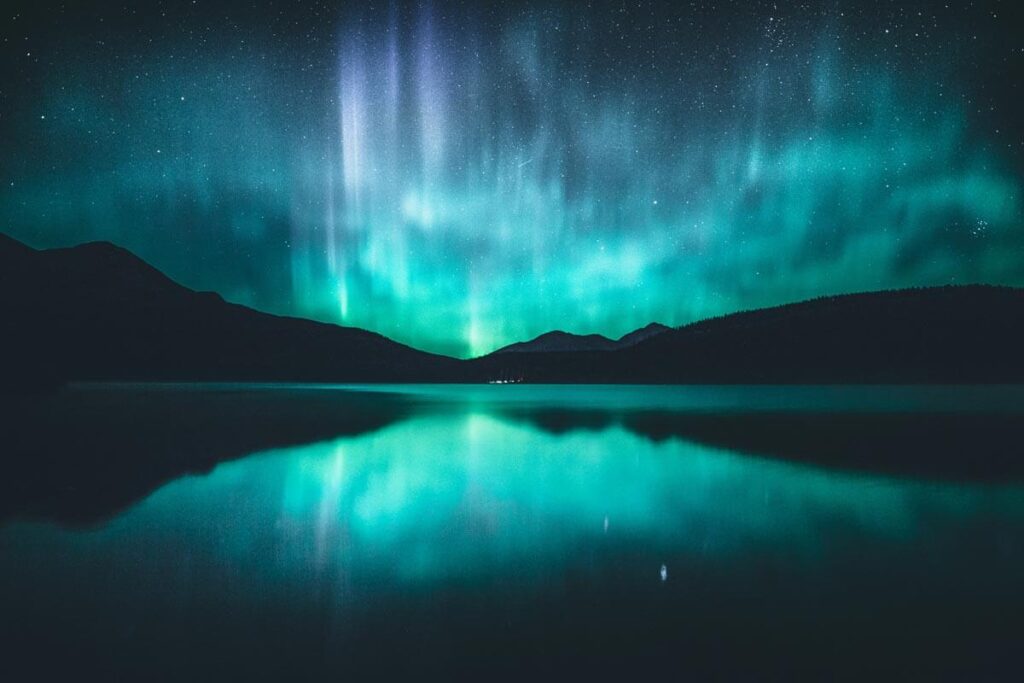
Contributed by Kat from endlesswonder.ca
Stargazing and searching for the Northern Lights are definitely one of the best things to do in Jasper National Park! Jasper is a protected Dark Sky Preserve, meaning light production is greatly reduced in the area. In Jasper, you will also have a chance to see The Northern Lights too if you’re lucky!
To see the stars here, you can head out on your own as long as you have a car, or join a tour. Some of the best spots to see the stars are Pyramid Lake, Medicine Lake, or Lake Annette.
If you’re interested in a tour or guided experience, check out the Jasper Planetarium, where they have telescopes and a wealth of knowledge! For photographers, book a Night Sky Photography Tour.
The best time to go stargazing in Jasper is during the months of September and October. Typically, the weather isn’t too cold yet, and the nights are longer! Jasper usually has a Night Sky Festival in October as well.
Boundary Waters Canoe Area Wilderness, Minnesota, USA
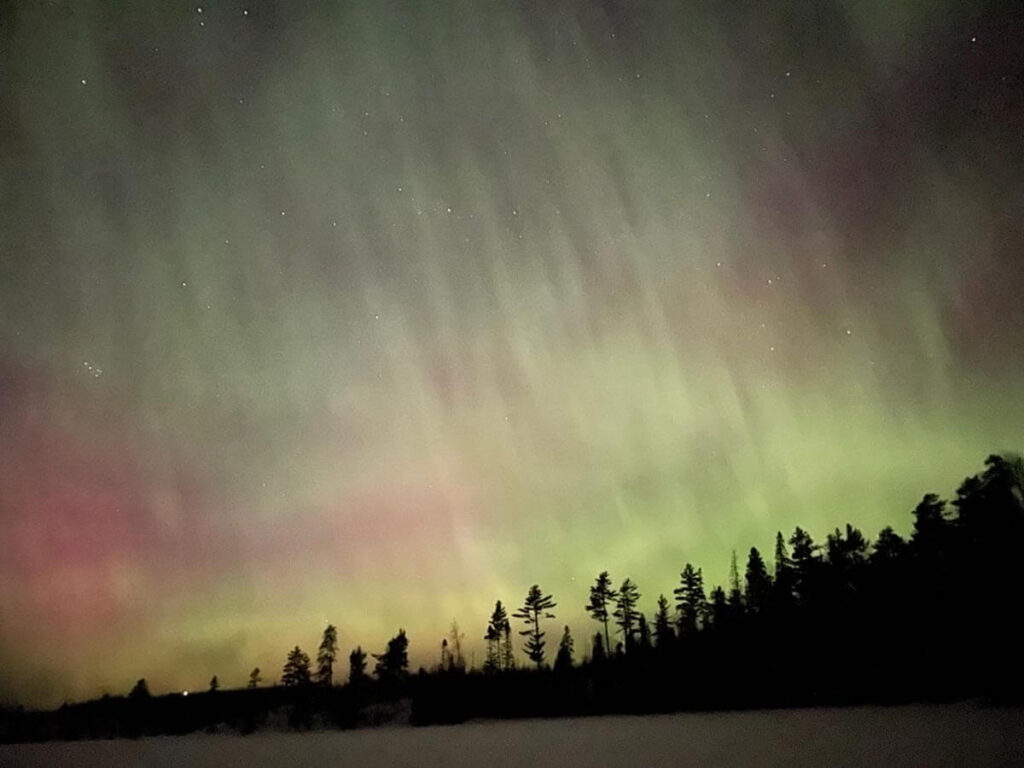
Contributed by Ada of Beyond the Yellow Brick Road: A Travel Blog
Boundary Waters Canoe Area Wilderness has some of the world’s best stargazing in the world. Dark Sky International designated this 1-million acre federal wilderness area the world’s 13th International Dark Sky Sanctuary in 2020.
While guided Boundary Waters trips are available, most people prefer to travel through this vast wilderness of lakes, trails, and campsites independently. You can rent canoes and camping equipment from any of the dozen canoe outfitters located on the edge of the Boundary Waters. They can also help with Boundary Waters trip planning.
Summer is the most popular and easiest time to visit the Boundary Waters, but the region’s long winter nights provide the best stargazing. It’s hard to beat the quiet stillness found in the middle of a frozen Boundary Waters lake when the northern lights come out.
McDonald Observatory, Texas, USA
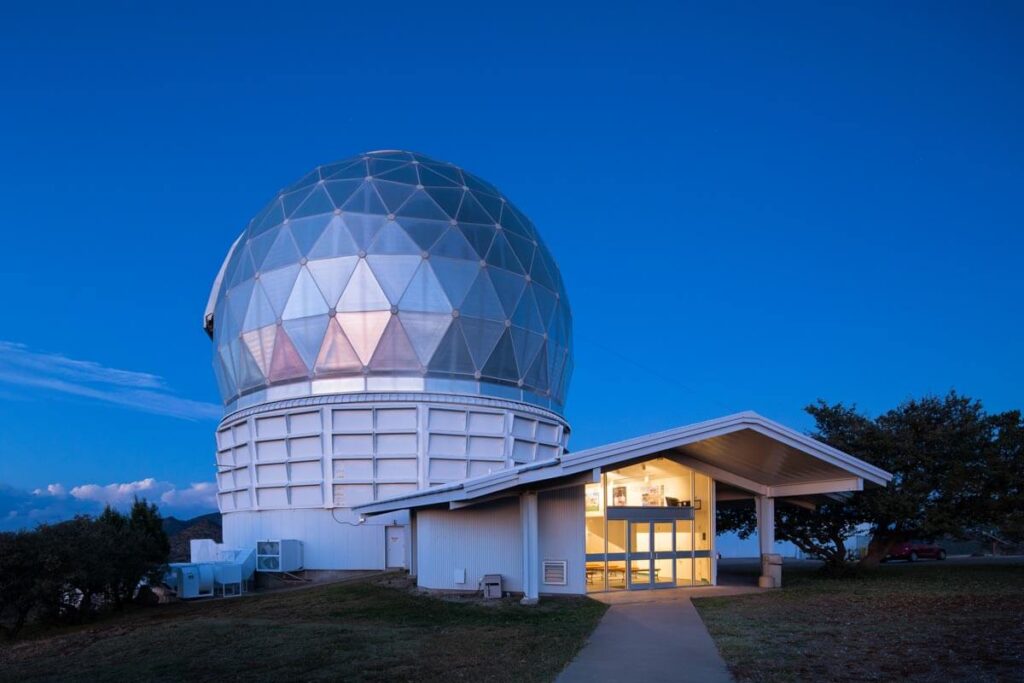
Contributed by Carole Terwilliger Meyers from Travels with Carole
Way out in West Texas, high on a hill not far from the artsy town of Marfa, I came across a spectacular spot to view the heavens.
This remote part of Texas is home to some of the nation’s darkest night skies and hosts outdoor Star Parties at the McDonald Observatory in Fort Davis. Classified as a Class 1 Dark Sky area, it permits super-clear views of stars and planets.
The show begins in an outdoor amphitheater and moves on to individual viewing through several observatory telescopes, which include the technologically advanced Hobby-Eberly telescope.
Zion National Park, Utah, USA
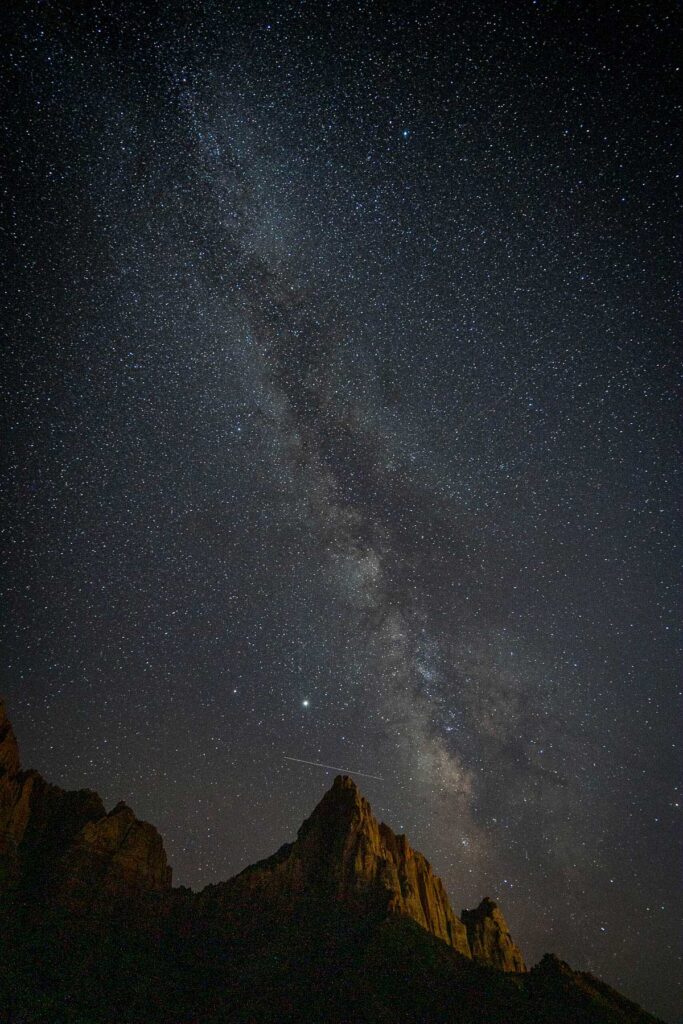
Contributed by Jess from Uprooted Traveler
Zion National Park is not only the most visited national park in Utah, but it’s also been designated as an International Dark Sky Place.
The highlight of the park is Zion Canyon, whose stunning red walls stretch up to 4,000 feet above the canyon floor below.
One of the best ways to enjoy Zion’s natural beauty – and its stunning night skies – is to select a spot to watch the sunset, as the walls are lit up with golden light. For example, the Canyon Junction Bridge and the viewpoint along the Watchman Trail are stellar places to enjoy the sunset and watch the stars twinkle to life.
Once the light of day fades away, Zion’s skies are an excellent place to spot the Milky Way with your naked eye, especially in the summertime. During other times of the year, you can also spot the Andromeda Galaxy or the Geminid Meteor Shower.
Joshua Tree National Park, California, USA
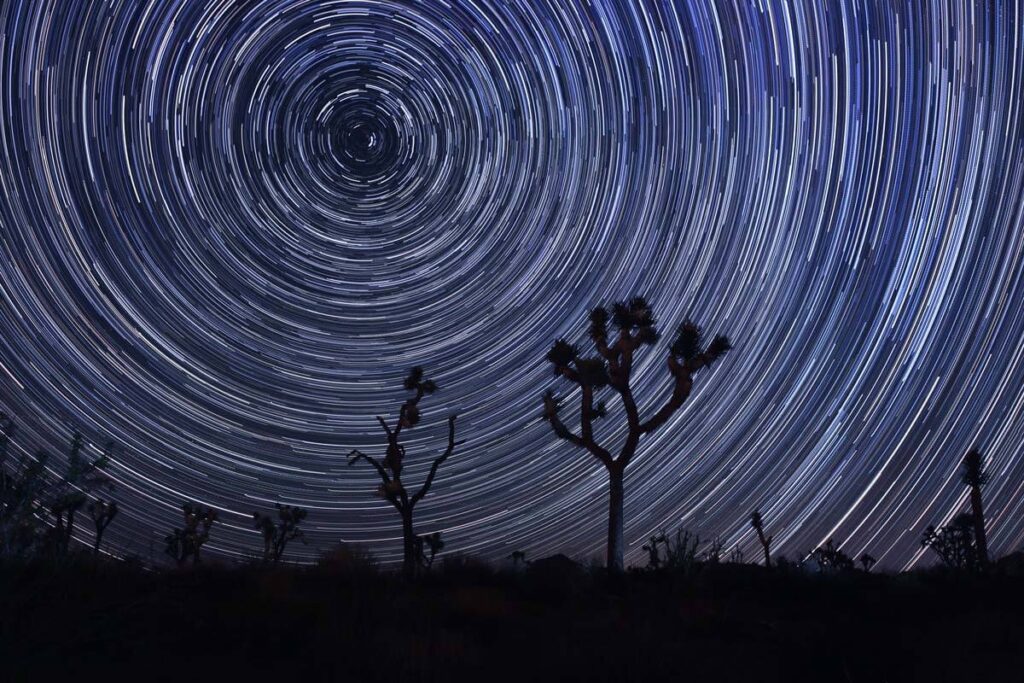
Contributed by Mayuri Patel from Fernwehrahee travel blog
Joshua Tree National Park is one of the best places to stargaze in the US, thanks to its high altitude and very low levels of light pollution.
Once you are in Joshua Tree National Park at night, you will see the whole park itself is a stargazing spot! A few of the famous spots for stargazing in Joshua Tree include Skull Rock, Hidden Valley, and Arch Rock. These spots make perfect foreground silhouettes in your photos.
If you are staying outside the Joshua Tree National Park at Twenty Palm entrance, Sky is the Limit Observatory is the best option for viewing the Milky Way. It is open to the public on Friday and Saturday nights.
You can also take part in the Joshua Tree Night Sky Festival, an annual event celebrating the stars in Twenty Palm Spring, held mid-October every year.
Arches National Park, Utah, USA
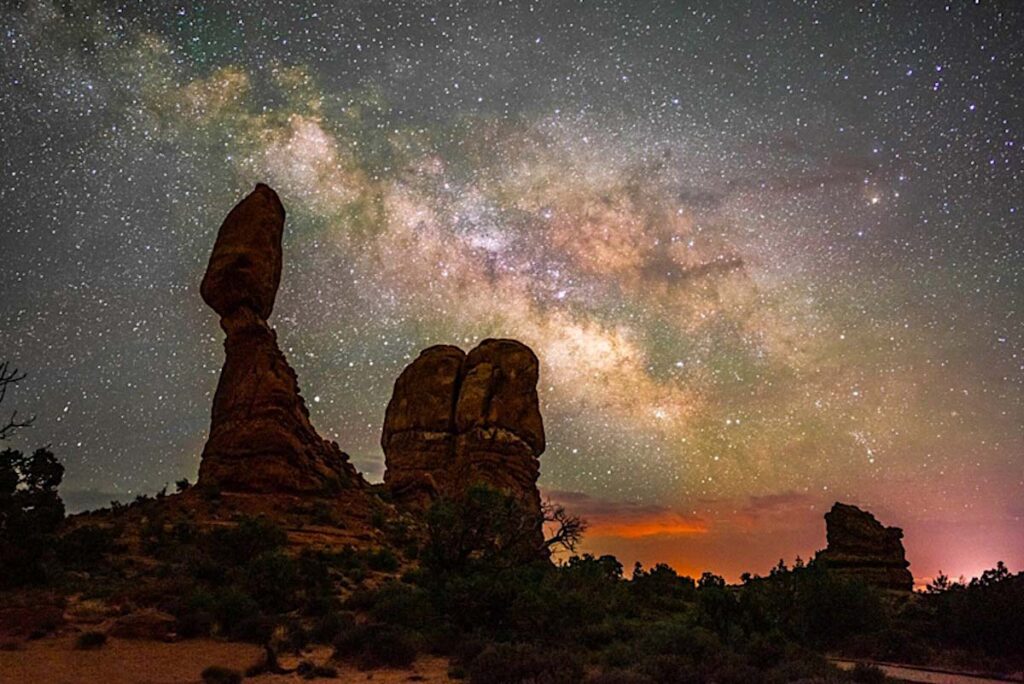
Contributed by Jamie from Photojeepers
One of the best places for stargazing in the world is Arches National Park. Located near Moab, Utah, this incredible national park has amazing dark skies due to its remote location, clear skies, and high altitude. That’s why, the park uses the iconic slogan, “Half the Park is After Dark”.
So, when you visit Arches National Park, try to spend at least one night stargazing. In particular, visit Arches National Park in April and plan to be out between 1:00 am and 4:45 am so that you can photograph the Milky Way. Great spots to visit in the park for stargazing include The Windows, the Balanced Rock Picnic Area, the Garden of Eden Viewpoint, and Panorama Point.
However, if you’re going to do stargazing and a bit of astrophotography then bring a headlamp with a red light. This red light will reduce light-related disruptions and allow you to see without destroying the low-light conditions around you.
Cherry Springs State Park, Pennsylvania, USA
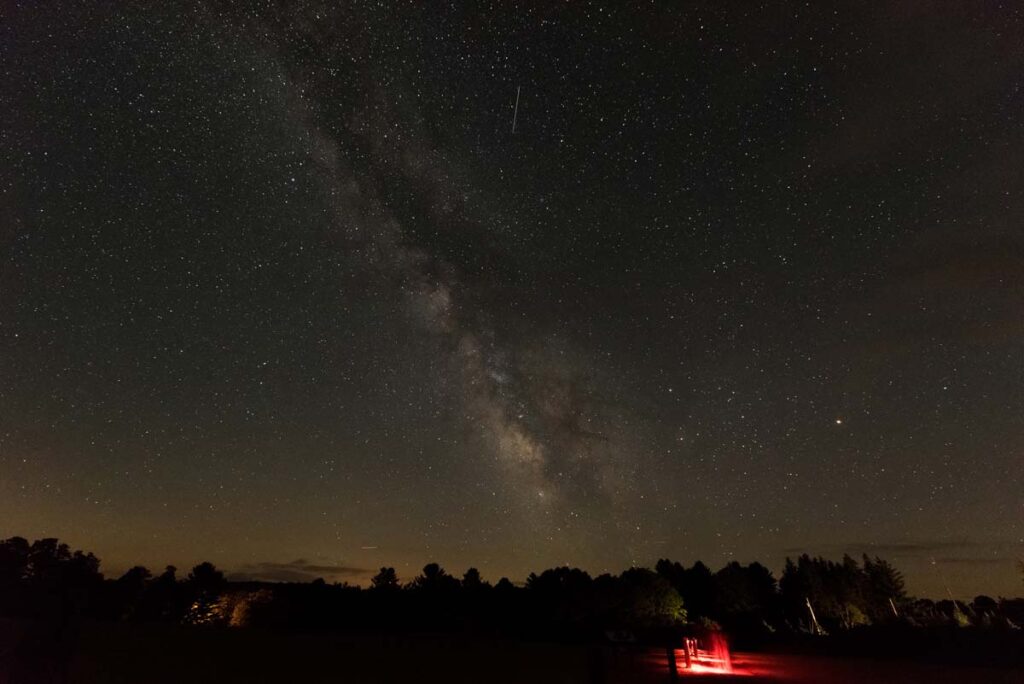
Contributed by Pamela, The Directionally Challenged Traveler
One of the best places to go stargazing around the world is in Cherry Springs State Park, Pennsylvania. It’s the only dark sky park east of the Mississippi River.
There are two places to stargaze at the park. The Astronomer’s field is for those who want to stay overnight and have their own astronomy equipment. There is a strict no-white light policy here. The observation field is for anyone to come at any time and you are not allowed to stay the night. You can bring your equipment to this side as well.
The park’s commitment to preserving its pristine night skies has earned it the Gold Level International Dark Sky Park designation, ensuring an unobstructed view of stars, planets, and celestial phenomena. Bring your telescope or join one of the park’s organized stargazing events to delve deeper into the mysteries of the universe.
The best times for stargazing at Cherry Springs typically coincide with new moon phases when the sky is at its darkest. With the right conditions, you may be able to see the Milky Way with your bare eyes.
Would you like to save this?
Mauna Kea, Hawaii, USA
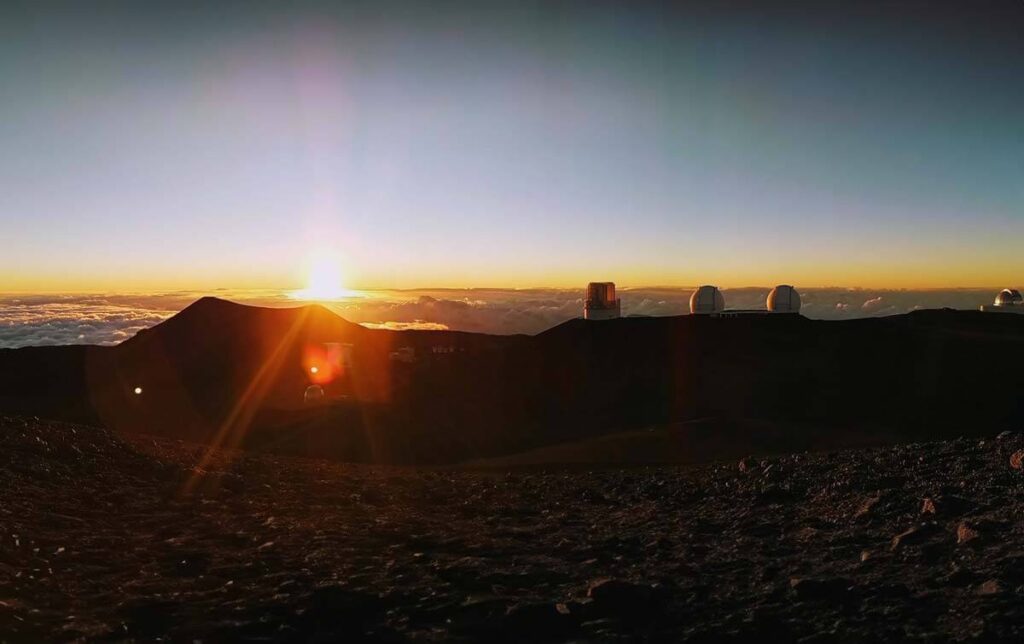
Contributed by Justine from Wanderers of the World
Thanks to its towering height of 13,798 feet, Mauna Kea, on The Big Island of Hawaii, offers world-class stargazing. There’s a reason why this mountain is home to one of the world’s largest astronomical observatories!
You can see thousands upon thousands of stars (and even the Milky Way!) with just the naked eye from up here.
While the industrial telescopes are reserved for scientific research, you can enjoy stargazing near the Visitor Center, located at approximately 9,000 feet.
You can access Mauna Kea by renting a car and parking near the Visitor Center or joining a guided tour from nearby towns such as Hilo and Kona. You’ll need a 4×4 to reach the observatories. But if you’re only going as far as the Visitor Center, then most cars will suffice.
It’s best to time your visit for late afternoon. That way, you can acclimatise yourself at the Visitor Center before heading to the observatories to watch an incredible sunset.
Bahia de Los Angeles, Baja California, Mexico
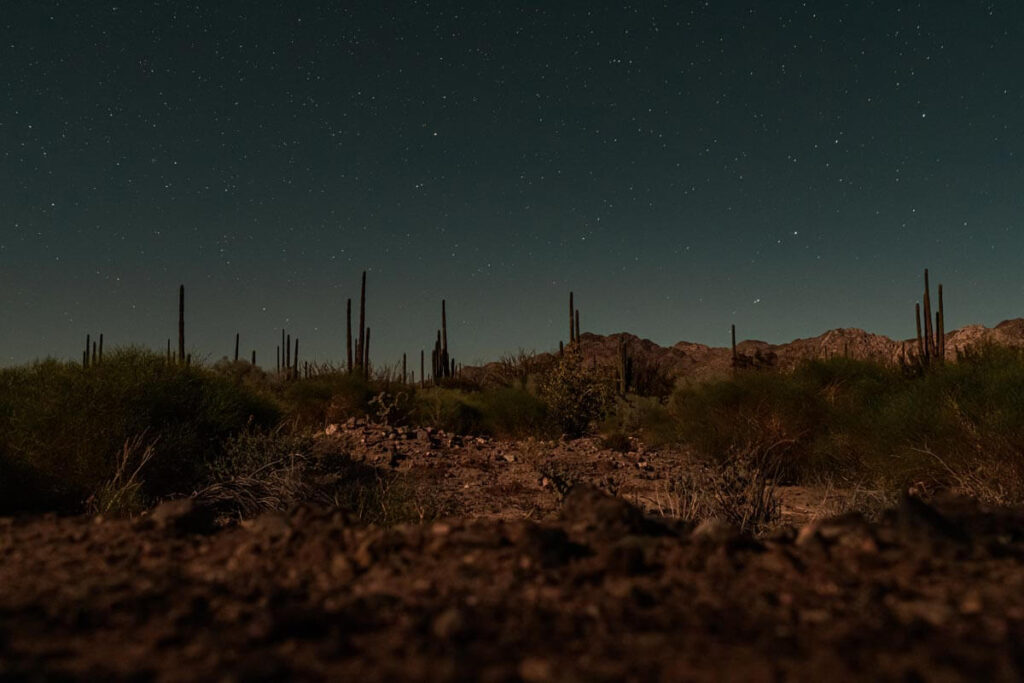
Contributed by Daria from Explore Baja California
Located in Baja California, Bahia De Los Angeles is a semi-off-grid town along the Sea of Cortez. Bahia de Los Angeles sits away from major highways and big cities, and has no light pollution, which means you can see the incredible dark skies here.
To enjoy stargazing in Bahia De Los Angeles, all you need to do is look up in the sky. While having your own equipment is helpful, you can see the stars with the naked eye.
The desert surrounding Bahia De Los Angeles is perfect for stargazing, and the best part is you can do it on your own – no guided tours needed.
Since Bahia De Los Angeles is a remote town, don’t forget to always have enough water and snacks when enjoying outdoor activities. The town has no cell phone service, so you will need to download offline maps or get paper maps, if you are going to the desert.
Best places to go stargazing in South America
Atacama Desert, Chile
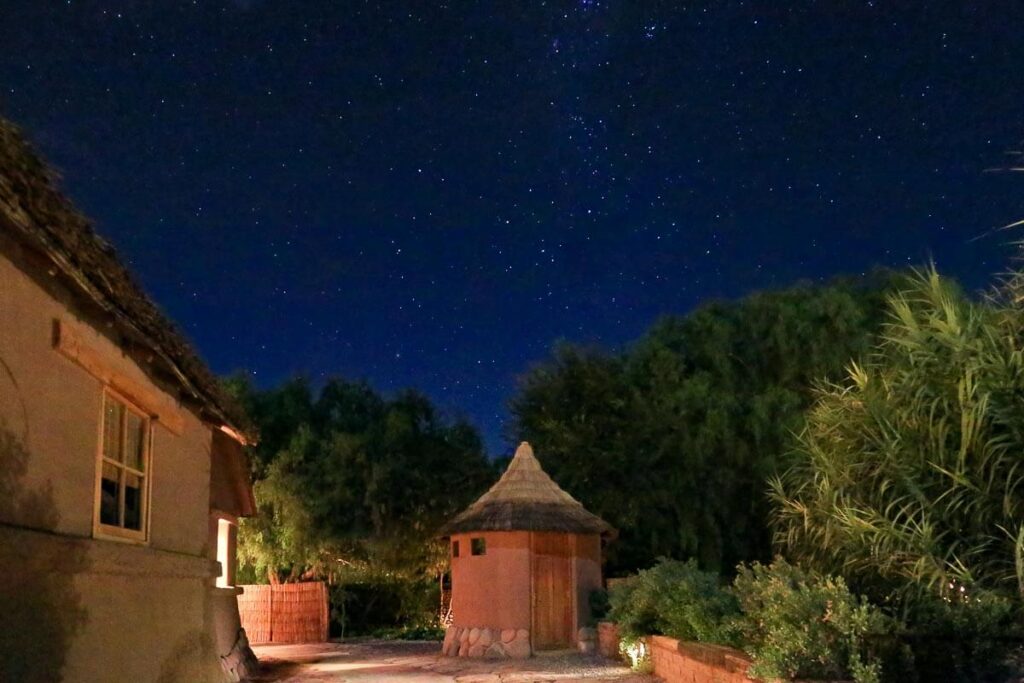
Contributed by Lori from Travlinmad
In northern Chile, the Atacama desert is the highest, non-polar desert in the world. To get to the Atacama you can take a bus from Santiago or drive yourself, but it’s a long trip to the only town in the desert, San Pedro de Atacama. Most people fly into Calama and rent a car to drive the 1 hour and 20 minutes to San Pedro.
Once in San Pedro, there are several ideal places to go stargazing. The best is the Valle Overlook next to the Valle de la Luna (Moon Valley). With an altitude of 8,200 feet and little ambient light to speak of, the night sky in the Atacama is as dark as it gets. Bring your binoculars or telescope along with an astronomy app on your phone or notebook.
Depending on the time of year, you can see the Southern Cross and other southern constellations. The orbiting space station can also often be seen.
Tatacoa Desert, Colombia
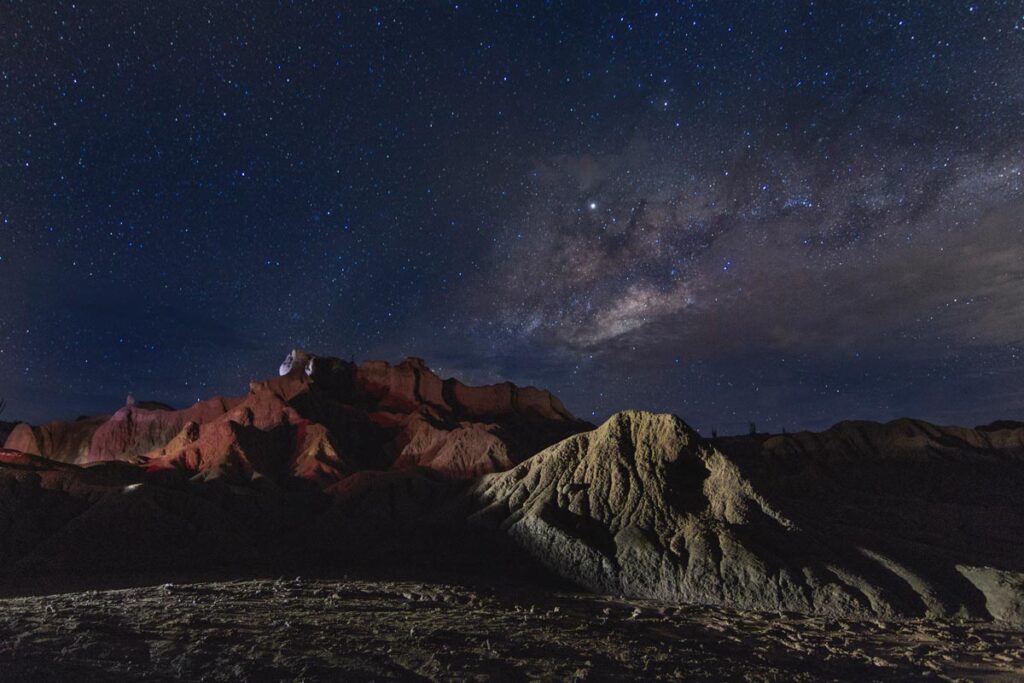
From Zoe from Zoe Goes Places
The Tatacoa Desert is one of the best places to go stargazing in South America. Aside from the mostly clear skies (and incredible landscape!), the fact it’s in the middle of absolutely nowhere means dark skies.
In fact, the skies are so perfect that you don’t even have to visit the Tatacoa Desert Observatory to see the stars. But a visit does allow you to access their telescope and Spanish-speaking astronomers. Otherwise, almost all hotels have netted areas for you to lie and look up at the magical night sky.
The observatory is along the main and only road through the Tatacoa Desert, a short drive from Villavieja. It’s a full day of travel from Bogota however, with the easiest route taking you via Neiva on intercity buses.
Sandoval Lake, Peru
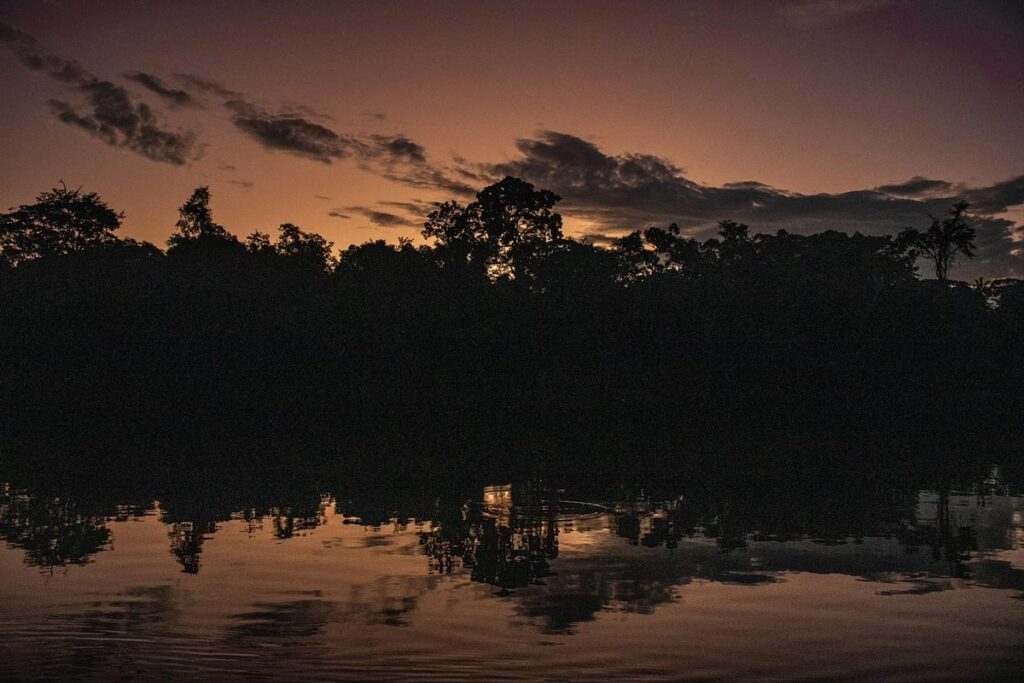
Contributed by Abbie and Jack from acouplescalling
For those traveling to Peru, you’ll want to visit Tambopata National Reserve if you’re a keen stargazer. Although the whole reserve offers breathtaking starry night skies, one of the best places has to be Sandoval Lake.
To reach Sandoval Lake, you’ll have to take a boat from Puerto Maldonado. Then there’s a 3 km (1.8 mile) hike to the lake.
For the best experience, you’ll want to head out on an evening river cruise. You’ll have the chance to spot wildlife, such as alligators, bats, and giant otters, and witness an epic sunset before admiring the striking night sky.
As you cruise along Sandoval Lake, you also have the chance to see the Milky Way, as well as shooting stars and constellations. Just be aware that these cruises are more centered on wildlife, so you’ll need your own equipment to stargaze.
Top places to see the stars in Africa
Merzouga Desert, Morocco
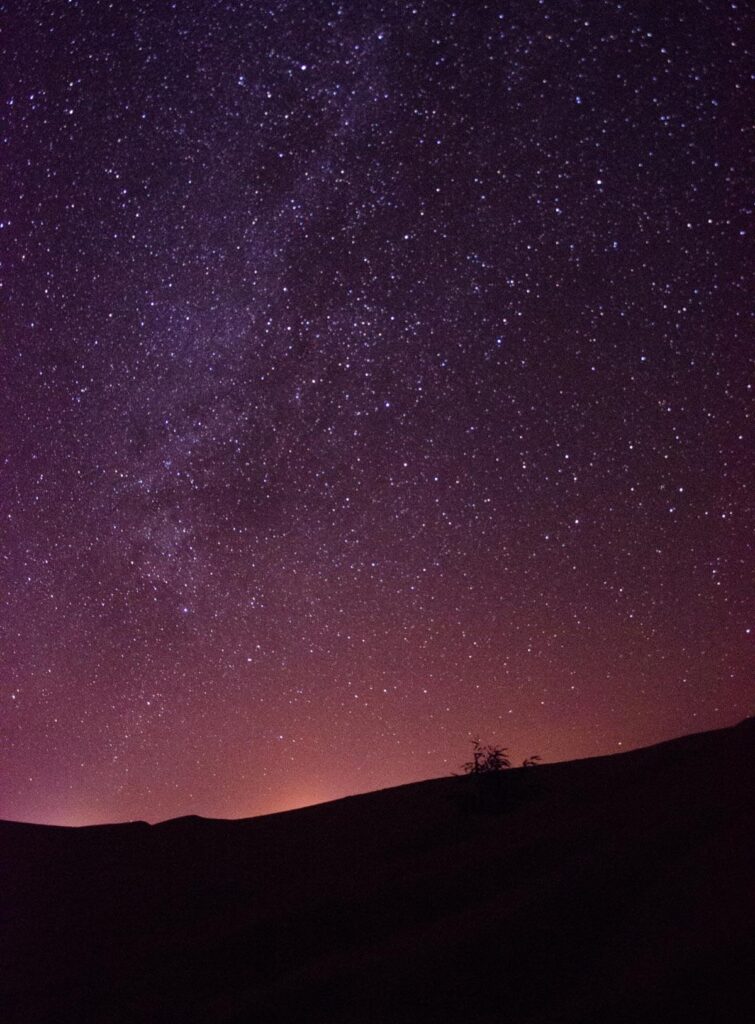
Contributed by Nina of Nina Out and About
The Moroccan desert is a popular tourist spot for camel rides and dune buggy day trips, but its best activity is often skipped: going on a Berber campout. You’ll stay in a giant tent in the desert playing music with the local Berber people and get to see the clearest stars of your life.
Bundle up because it is freezing in the desert at night, and wander to the edge of the tents where it’s so dark you can’t see your hand in front of you. Sit on the dunes and look up at the Milky Way.
You can only do this experience with a tour. I recommend booking via your local Riad – mine booked my experience for me. It can either start with a camel ride – which I don’t recommend for ethical reasons – or a dune buggy trip racing over the sand dunes. It’s an easy 2 or 3 day experience from Marrakech.
Visit during winter – December to February – when the desert isn’t as hot during the day.
You’ll need to bring your own photography equipment.
Solitaire, Namibia
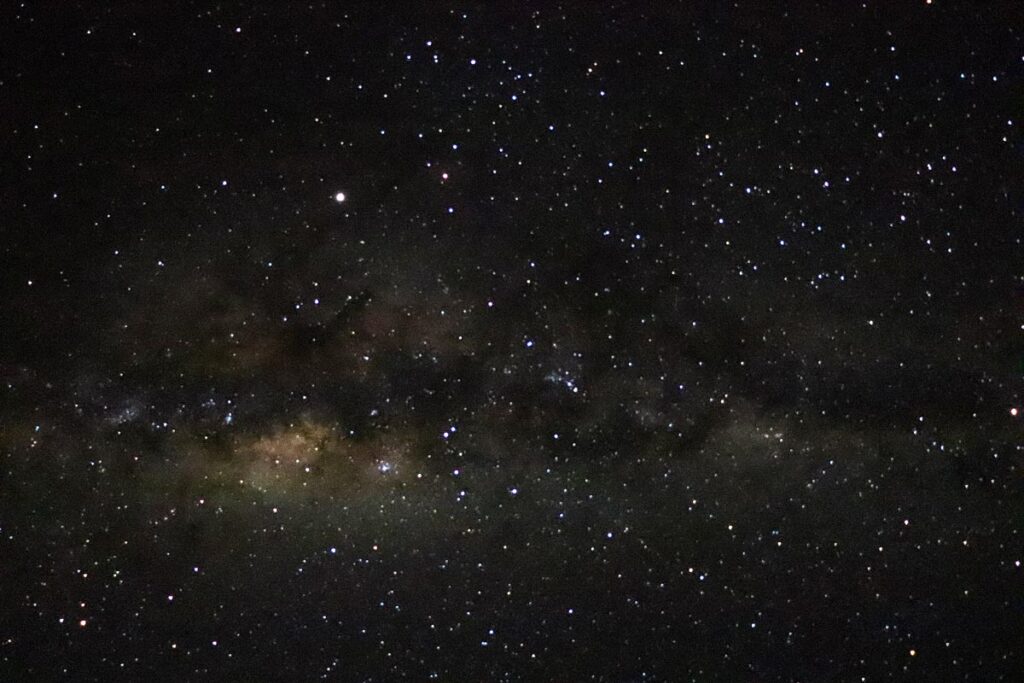
Contributed by Robyn Dirk from Two Empty Passports
The town of Solitaire in the Namib Desert of Namibia is known for its stunning night skies. With minimal light pollution, it is perfect for stargazing.
From the Gondwana Namib Desert Lodge, I observed countless stars constellations, and the Milky Way clearly in the skies above. It was truly a once-in-a-lifetime experience.
Guided stargazing tours are available and will provide equipment and an expert, however, they are not necessary.
I successfully captured beautiful photos of the Milky Way with my Canon Rebel T7 camera and a tripod. For the best views, set your equipment up close to the lodge entrance where there is no light.
To reduce travel costs, book a rental car from the Windhoek International Airport. From there, it is a 3-hour drive to Solitaire. The best time to visit is during the dry months from April to September when the skies are clearest.
Usambara mountains, Tanzania
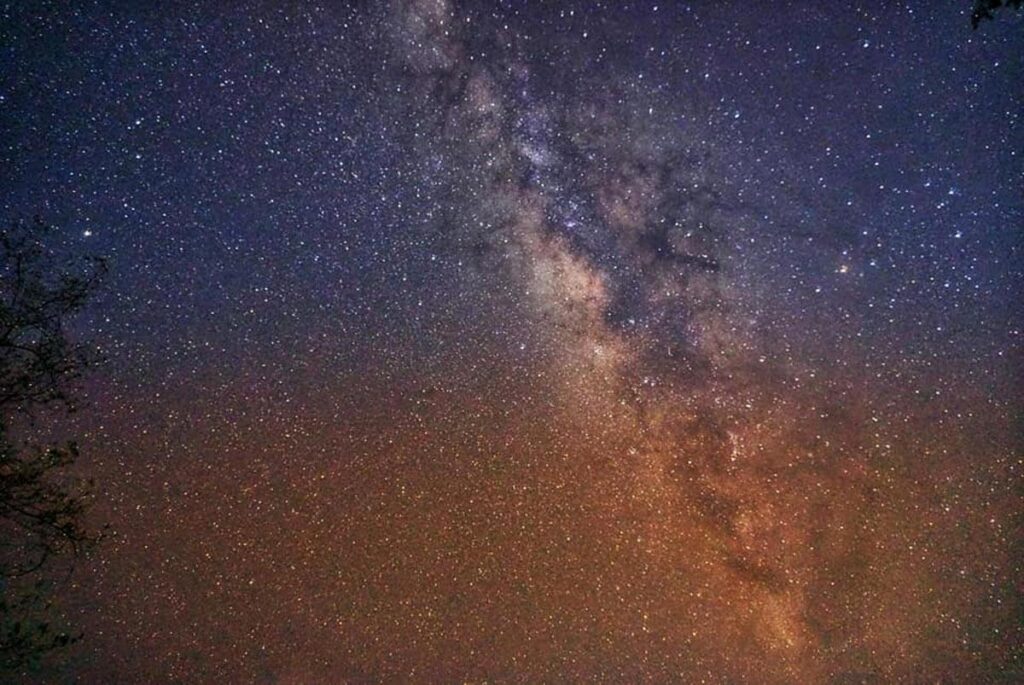
Contributed by Pilar from Travel The World Pages
One of the best places to go stargazing when visiting Tanzania are the West Usambara Mountains. The Usambara Mountains are a mountain range in Tanzania, known for its stunning hiking trails and clear skies.
There are several spots in the area where the Milky Way is visible almost every night, specially Jagestal, the Magamba peak of the Sume forest.
You can only reach the Usambara mountains by bus. There are several daily buses from Dar Es Salaam, the biggest city in Tanzania, to Lushoto town. You can either arrange a night walk or a one night stay in one of the camping sites in the area. If you choose a night walk, you should always go with a local guide for safety reasons.
Places to go stargazing in Asia
Cappadocia, Turkey
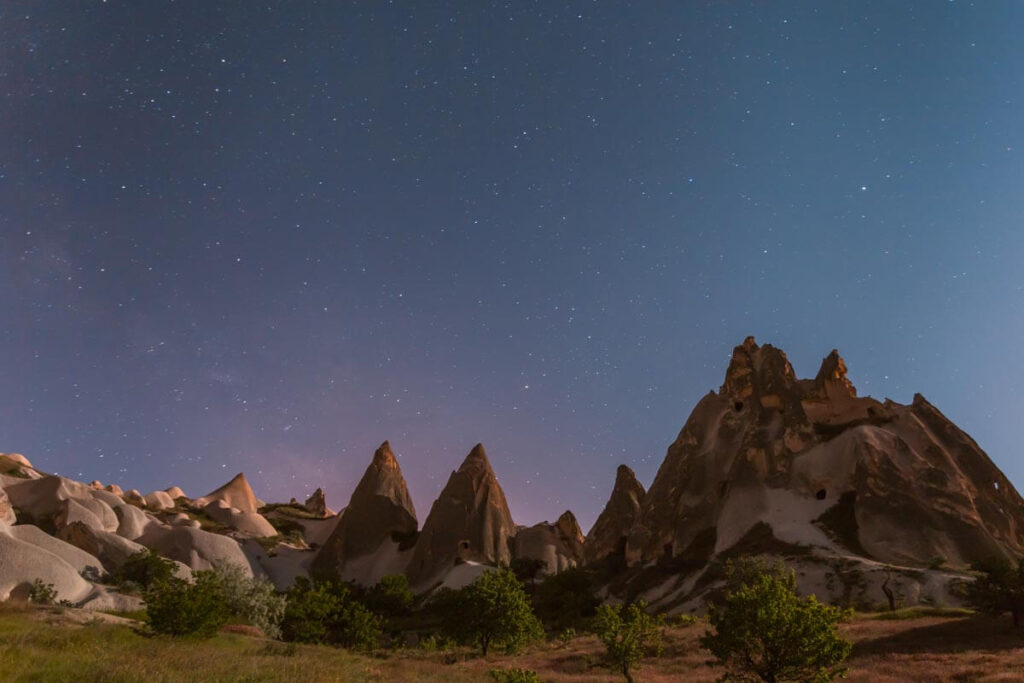
Contributed by Lara from The Best Travel Gifts
With its unique rock formations, otherworldly landscape, and desert-like terrain, Cappadocia is one of the most beautiful places in the world. Add a clear sky, open spaces, and hardly any light pollution to that, and you’ve got one of the best stargazing destinations in the world.
You will need to walk or drive away from the villages and into the valleys such as Red Valley, Chimney Valley, or Love Valley for the best experience. With the naked eye, you get to admire the Milky Way in its full glory already (and even some meteor showers if you’re lucky). However, with a telescope, you get to see even more.
You can enjoy a clear sky year-round in Cappadocia. Though keep in mind that this is a desert-like setting, where temperatures drop significantly at night and you can actually get snow during wintertime.
Mount Bromo, Indonesia
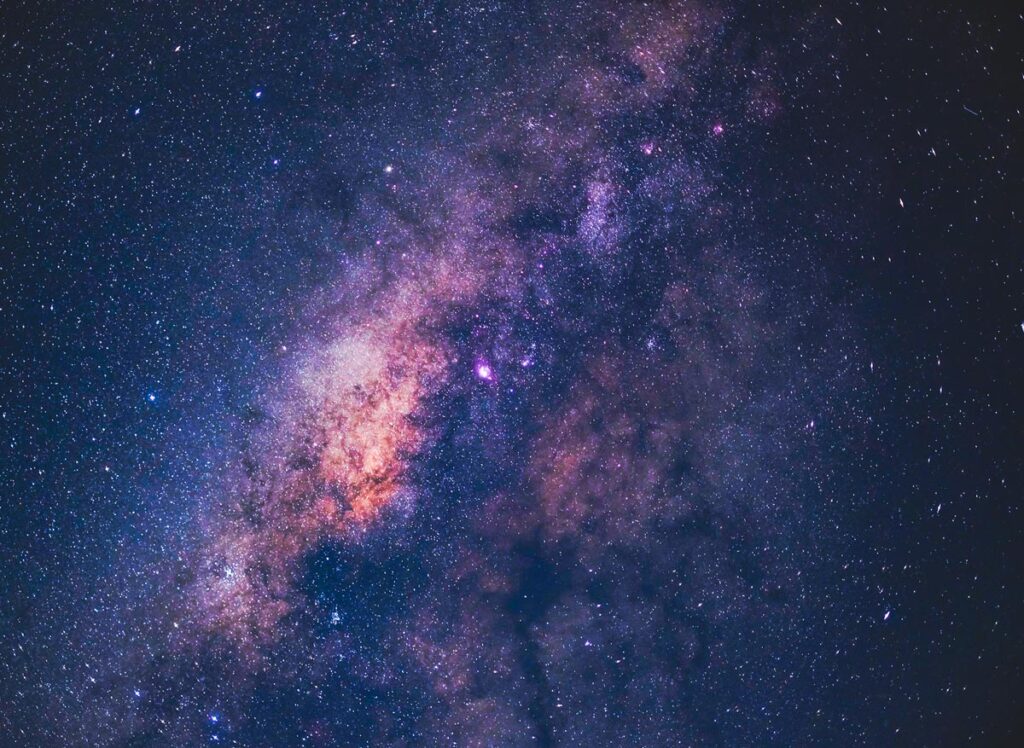
Contributed by Guillem from Feast of Travel
Mount Bromo is a volcano located in East Java in Indonesia. It is a popular hike and no doubt one of the most photographed sunrises on Instagram. What many people don’t know is that it’s also a perfect spot to look at the night sky.
At 2,329 m altitude and with very little light contamination, the Bromo caldera is one of the best places to see the Milky Way! While most tourists start their trek at around 3am to see the sunrise in the surrounding peaks, make sure you’re already there from 1 to 4 am, when the Milky Way is most visible, especially from April to September during the dry months.
There are some tours that arrange the whole excursion to Mt. Bromo, but you can arrange it on your own. Most of the time you only need a DSLR camera or binoculars, although on clear nights with no full moon it can be seen with the naked eye.
Panna National Park, India
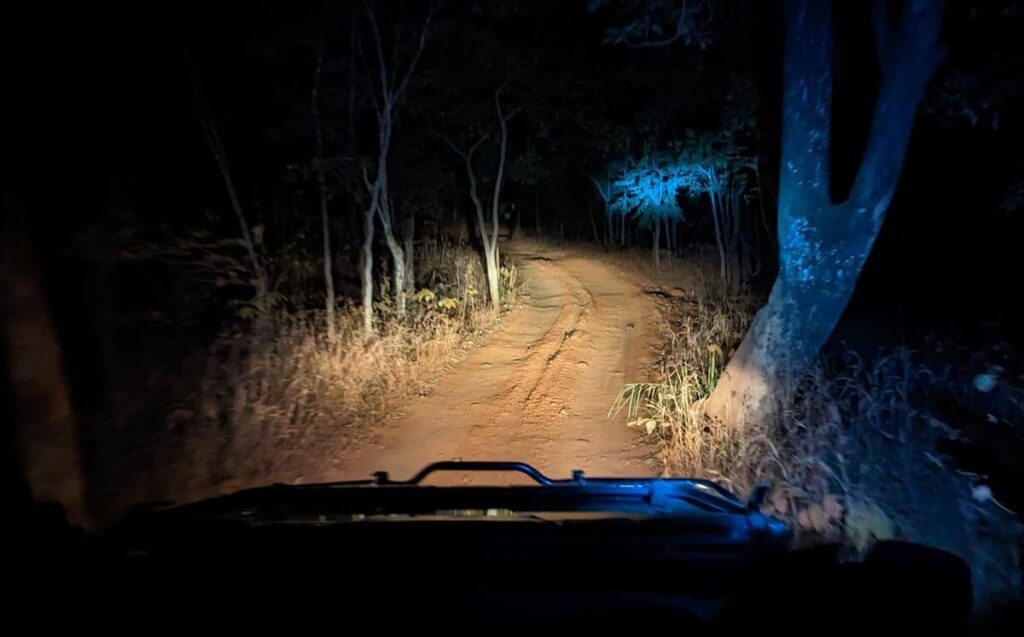
Contributed by Melissa from Mountains & Mahals
Take a trip to Panna National Park, located in Madhya Pradesh in Central India, for an amazing spot to see the stars in a peaceful environment without light pollution.
Stay at Taj Pashan Garh to elevate your stargazing experience. The hotel consists of 12 cottages located on 200 acres of wilderness within the buffer zone of Panna. You’ll have the bonus of seeing animals around the property, including a watering hole that tigers often visit in the summer months.
While safaris within the park grounds are either in the early morning or afternoon, at Taj Pashan Garh they also offer night safaris for hotel guests. With a specially trained naturalist you’ll be guided around the property in an open vehicle. The property also has a lookout tower that serves as the perfect spot for stargazing.
Top stargazing spots in Australia and New Zealand
Alice Springs, Australia
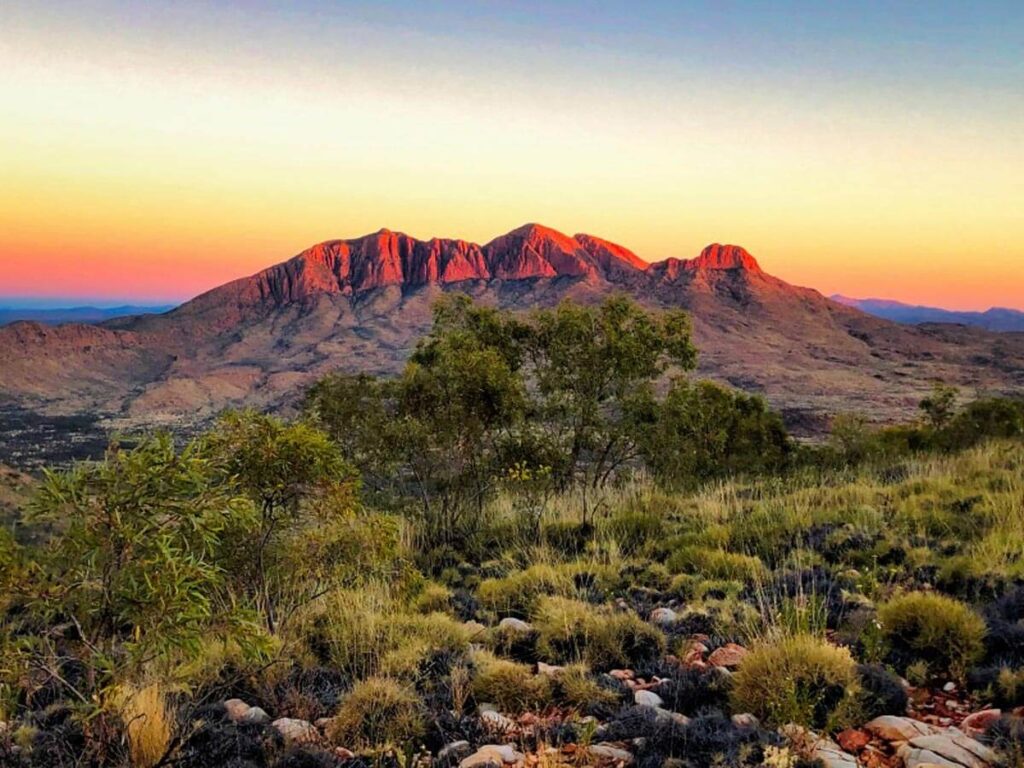
Contributed by Dotti from Explore Travel Oasis
Due to its remote location, dry desert air and lack of light pollution, Alice Springs in Central Australia has some of the best night skies in the world. In Alice Springs, you can see constellations that are not visible anywhere else in the world.
If you have your own equipment (or due to the abundance of stars, simply your naked eye), you can just drive 15 minutes out of town for some world-class stargazing.
Otherwise, Alice Springs has its very own award-winning observatory, the Earth Sanctuary, which offers several different tours and activities. With their superpowered telescopes, you can expect to see Jupiter’s many moons, Saturn’s rings and even the ISS passing overhead!
While you’re in Alice Springs, be sure to check out a bit of the Larapinta Trail and of course, Uluru.
Outback Queensland, Australia
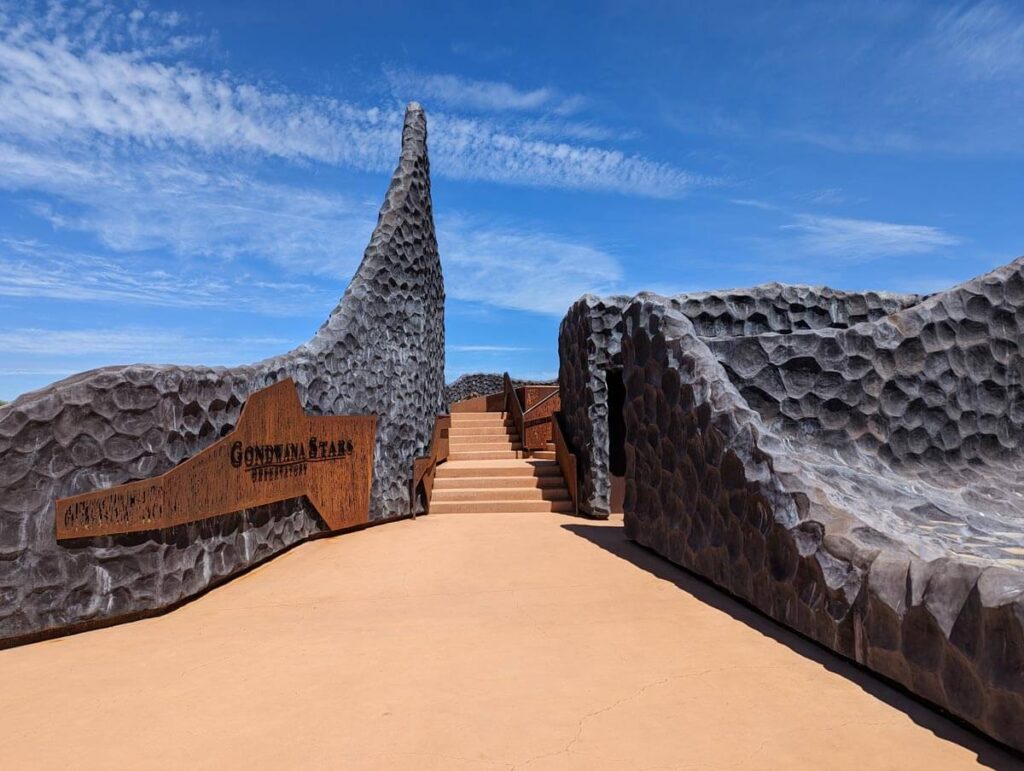
Contributed by Lanie from Make More Adventures
Winton, a small town located in Outback Queensland, is home to Australia’s first international dark-sky sanctuary, which is called the Jump Up at Gondwana Stars Observatory.
Known for recent findings of dinosaur fossils, most people visit Winton to see the Australian Age of Dinosaurs Trail. Gondwana Stars Observatory is part of the museum and can be visited on a tour a few nights a week. Tours of the stars last about 1.5 hours.
The stars are viewed through the naked eye with the guide using handheld lasers. Visitors get the chance to look through a telescope at the end of the tour.
April until September is the best time to visit Winton and the rest of Outback Australia as the weather is cooler and attractions are likely to be open.
Tekapo Dark Sky Reserve, New Zealand
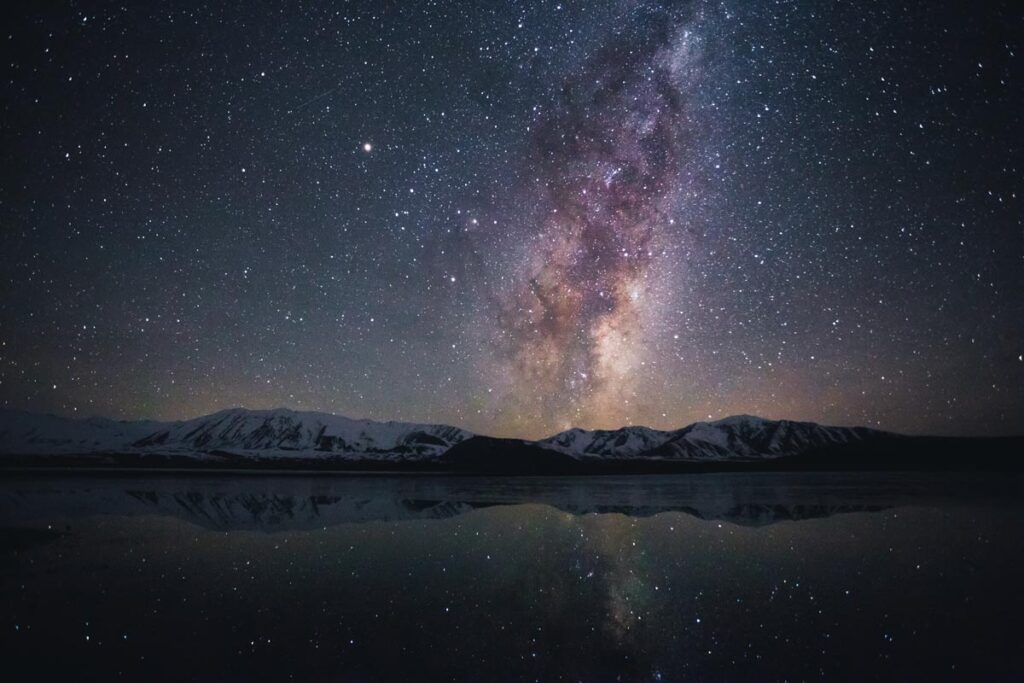
The Tekapo Dark Sky Reserve is part of the Aoraki Mackenzie International Dark Sky Reserve, one of the largest in the world. Strict light pollution controls ensure skies of unparalleled clarity, perfect for stargazing.
Lake Tekapo, within the reserve, is particularly famous for its stunning night skies which reflect in the lake’s peaceful waters.
The Mount John Observatory is another great place to go stargazing. You can take a guided tour to the observatory site and explore the stars, first with the naked eye, then with powerful telescopes. Stargazing is best during the colder months as the skies are typically clearer, but it does get very cold up here so you’ll want to dress warmly, even though extreme cold weather jackets are provided.
In summary
In this post we’ve travelled far and wide to find 30 of the world’s best places to go stargazing. From peaceful natural sites where you can see the Milky Way in all its glory, to places where the stars align with UNESCO World Heritage sites, each destination has its own special celestial charm.
I hope this post has inspired you to look up and appreciate the beauty of the night sky, and perhaps plan your next adventure under the stars. Whether it’s a dedicated stargazing trip or a moment of starry contemplation during your travels, the universe is waiting to unfold its wonders. Keep looking up; the stars are just a journey away!
Pin it for later!
